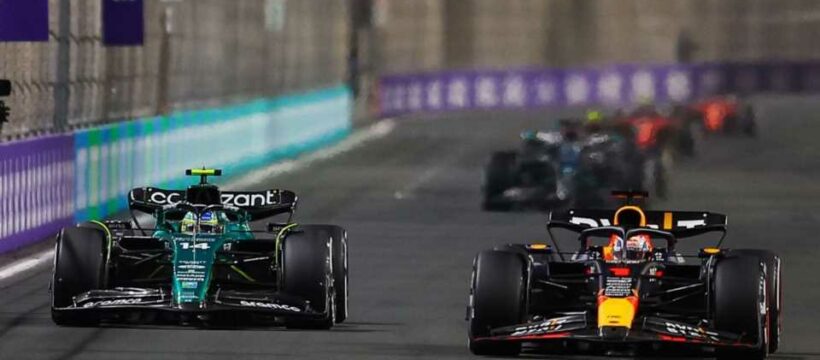FORMULA ONE is one of the most technical sports in the industry – and the 107% rule is a prime example of it.
With the 2023 F1 season now underway, Red Bull have kicked off the campaign as they mean to go on.
Max Verstappen cruised to victory in the Bahrain Grand Prix as he looks to retain his 2022 F1 title.
And Red Bull maintained pole position as Sergio Perez secured the title at Saudi Arabian GP.
However, the Red Bull superstar's wouldn't have been able to achieve those results if they violated the 107% rule.
What is the 107% rule?
The 107% rule is a F1 regulation affecting racing qualifying sessions.
Read More in 2023 F1 Season
Saudi GP next, dates for British and Las Vegas Grand Prix CONFIRMED
Hamilton’s Mercedes plot radical changes to 2023 F1 car after just ONE race
To be eligible to compete in a grand prix, a driver must qualify within 107% of the time set in Q1 by the fastest car.
For example, if the fastest drive set a Q1 time of 100 seconds, each driver would need to complete the race in 107 seconds to secure a race start.
The regulation has mainly been implemented for safety reasons, to minimize accidents if drivers are too slow.
Are there any exceptions for the F1 107% rule?
If a team can prove that their car and driver is fast enough to race, the FIA may grant an exception to allow a driver to compete.
Most read in Motorsport
Lewis could suffer another huge car blow if Alonso stays in title running
Lewis Hamilton changes NAME amid new F1 season in touching tribute to mum
Alonso FOUR HOUR wait for podium proves FIA is not fit for purpose in F1
F1 ace Lando Norris 'robbed of incredibly rare £144k designer watch'
This can be done by showing the stewards their times from the three practice sessions if they are within 107% of the time set in the Q1.
Also, if there is evidence of a mechanical failure that suggests the driver is not responsible for the performance, a concession can be given.
What drivers have violated the F1 107% rule?
- In 2017, during the Italian Grand Priz, Haas driver Romain Grosjean failed to adhere to the regulation. He was granted a concession and was able to compete.
- In 2018, in the Azarbaijan Gran Priz, Toro Rosso driver Brendon Hartley was also allowed to start the race after violating the 107% rule.
- Aston Martin's Lance Stroll was another driver to be granted anexcpetion after failing to finish within 107% during the French Grand Prix in 2021.
- Most recently, Logan Sargeant had to be given special permission to compete in the 2023 Saudi Arabian GP after failing to set a fast enough time.
Source: Read Full Article









